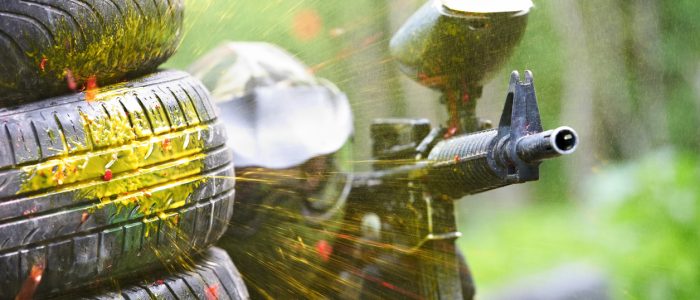Propellants

On a paintball marker is a compressed air tank that powers up and fires the marker with the compressed gas it holds. There are two primary compressed gases that are used in markers: carbon dioxide (CO2) and high-pressure air, which is also referred to as HPA or nitrogen.
Carbon Dioxide
The first type of propellant used in paintballing was CO2. It creates pressure for the marker by expanding. Using CO2-based markers comes with its advantages. For one thing, it is an inexpensive option, allowing players to own several tanks of CO2 with no problem. Also, refilling them is easy enough, and the CO2 tanks are usually lightweight and smaller.
However, there some complications with CO2-based markers that make some players hesitant to use them a nymore. When CO2 is compressed inside the air tank, it turns into a liquid form, and the only way it can expand to provide that pressure is for it to turn into a gas. This transformation into gas causes the tank to cool down.
nymore. When CO2 is compressed inside the air tank, it turns into a liquid form, and the only way it can expand to provide that pressure is for it to turn into a gas. This transformation into gas causes the tank to cool down.
The drawback to this situation becomes apparent when players try to fire rapidly, more so if the weather conditions are cold. It causes the pressure to fluctuate up and down, which in turn causes the marker to have less accuracy. Some markers can even freeze up, resulting in permanent damage. This is why it’s important that players don’t leave these tanks in direct sunlight as it can force the gas to expand too much.
High-Pressure Air
High-pressure air continues to grow in popularity over CO2 tanks. This remains a gas even when compressed, and although it cools the tank, it does so at a much  slower rate compared to CO2. With it not having to transition from liquid to gas, there are no concerns with pressure fluctuation.
slower rate compared to CO2. With it not having to transition from liquid to gas, there are no concerns with pressure fluctuation.
There are still concerns with using HPA tanks over CO2 ones though. One of the issues players have is the fact that these tanks can be rather expensive. These tanks, whether filled with HPA or pure nitrogen, are also on the heavier side.
When it comes to the weight, the tanks are typically made using steel. Though heavier, HPA-markers made with the material are usually more cost-friendly. For the players seeking something lighter in weight and with more durability, they turn to tanks made from carbon fiber. However, these tanks do cost more.
Another issue with these types of markers is that finding facilities to refill them isn’t always easy compared to finding areas for CO2 refills.

